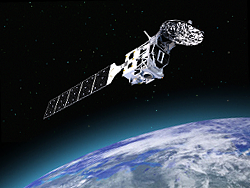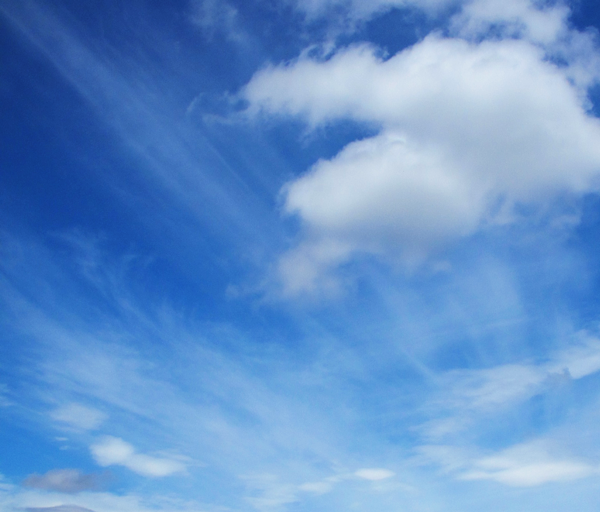- Top
- Introduction
- What is the Earth Clouds, Aerosols and Radiation Explorer Mission (EarthCARE)?
What is the Earth Clouds, Aerosols and Radiation Explorer Mission (EarthCARE)?
The Earth Clouds, Aerosols and Radiation Explorer Mission (EarthCARE) is the Earth observation satellite mission that has been developed as a co-operation between Japan and Europe.
Four sensors (Cloud Profiling Radar, Atmospheric Lidar, Multi-Spectral Imager and Broad-band Radiometer) on board an orbiting satellite are used to observe the distribution and vertical structure of clouds and aerosols (fine particles such as dust and dirt in the atmosphere) and the radiation energy at the top of the atmosphere on a global scale.
Global observation of the distribution, vertical structure and radiative energy at the top of the atmosphere. This will help to understand the behaviors of clouds and aerosols, which have a significant impact on the Earth system, and the mechanisms by which clouds and aerosols affect the Earth's climate, and to incorporate the results into numerical climate models or use them to evaluate numerical climate models, thereby improving the accuracy of climate change predictions.

Appearance of EarthCARE satellites

Computer simulations are used to predict climate change, including future global warming, and the accuracy of these simulations depends on how accurately they reflect natural phenomena.
However, not all natural phenomena associated with climate change have been identified, which means that there is uncertainty (prediction error) in current predictions. One of the most important sources of uncertainty is the effect of clouds and aerosols on the global atmospheric radiation budget.
EarthCARE will measure the vertical distribution of cloud particles and aerosols and the rate at which cloud particles rise and fall, which have not been adequately observed. The Earth is maintained at its current human-friendly temperature by a fine balance between the energy received from the Sun and the energy emitted by the Earth (the Earth's radiation budget). EarthCARE observations are expected to improve the accuracy of climate change predictions by elucidating the mechanisms of the Earth's radiation budget caused by clouds and aerosols and their interactions.

JAXA, in collaboration with the National Institute of Information and Communications Technology (NICT), is developing and manufacturing the Cloud Profiling Radar (CPR), the world's first satellite-based W-band (94 GHz) Doppler radar. The CPR is an important tool for observing the vertical structure of clouds.
JAXA is also responsible for producing observational data products for the CPR and the other sensors, and for distributing the data to the scientific community. In addition, JAXA will contribute to the development of science and technology for predicting the global environment by analyzing the observation data and conducting research and development using observation data.
The EarthCARE mission is an international collaboration between JAXA, the National Institute of Information and Communications Technology (NICT), the European Space Agency (ESA), and scientists from universities and research institutes in Europe and Japan.